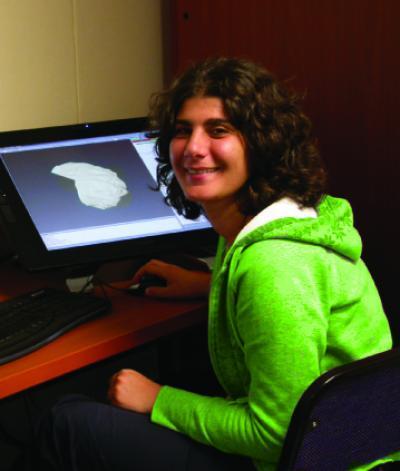When, how and why modern humans first stood up and walked on two legs is considered to be one of the greatest missing links in our evolutionary history. Scientists have gone to the far ends of the earth – and the wonderful creatures in it - to look for answers to why we walk the way we walk.
In the latest such search, researchers from the University of the Witwatersrand in Johannesburg (South Africa) have taken a closer look at bipedal kangaroos and wallabies and how they move compared to their cousin-marsupials, such as the quadrupedal Tasmanian wolf.
In an article published online in the scientific journal PLoS ONE on Tuesday, 12 March 2013, the researchers examine connections between bone form and locomotor behaviour in bipedal and quadrupedal marsupials.
The study was led by Dr Kristian Carlson, Senior Researcher at the Institute for Human Evolution (IHE) at Wits University. Contributing authors include: Dr Tea Jashashvili, Postdoctoral Fellow at the IHE at Wits University; Kimberley Houghton, MSc candidate at the IHE at Wits University; Dr Michael Westaway from the Queensland Museum (Australia); and Dr Biren Patel from the University of Southern California (US).
Their article is entitled Joint loads in marsupial ankles reflect habitual bipedalism versus quadrupedalism. The research demonstrates that bipedal marsupials, such as kangaroos and wallabies, experience greater forces through their hind limb joints (e.g., ankles) when walking, compared to other marsupials that walk on four legs.

Dr. Kris Carlson, lead author of the study, is from the Institute for Human Evolution at Wits University.
(Photo Credit: Kristian Carlson)
The study has several important implications in the area of research known as functional morphology.
Characterising forces that joints experience during movement is imperative to understanding how the joints of animals function and facilitate such movements. Documenting these forces, however, is extremely difficult for practical reasons.
Using physical instruments to measure joint forces is impossible without altering the natural movements of animals. By combining computed tomography (CT) and image analyses, the team of researchers was able to estimate joint forces in a non-invasive, accurate manner.
As the group predicted at the outset of the study, marsupials supporting their body with only two hind limbs during movement sustain higher estimated forces in their joints compared to marsupials that support their body with all four limbs during movement. This finding offers insight into the structural uniqueness of hind limb joints (e.g., ankles) of bipedal marsupials.
Members of the team are currently expanding the published study into the next phase of a larger project by documenting the same phenomenon in primates in order to investigate whether bipedal humans differ from related quadrupedal primates in parallel (or different) ways as bipedal marsupials differ from related quadrupedal marsupials.
By comparing analogous systems in primates and marsupials, team members will garner potentially new insights into the mechanics of human bipedalism. Such insights will advance current understanding of the morphological adaptations expressed by our distant hominin ancestors (e.g., australopithecines).
These insights will prove particularly timely considering the emerging trend in recognizing substantial variation in the form of bipedalism expressed by our hominin ancestors.

Dr. Tea Jashashvili, Postdoctoral Fellow at the Institute for Human Evolution at Wits University.
(Photo Credit: Dr. Tea Jashashvili)
Source: University of the Witwatersrand